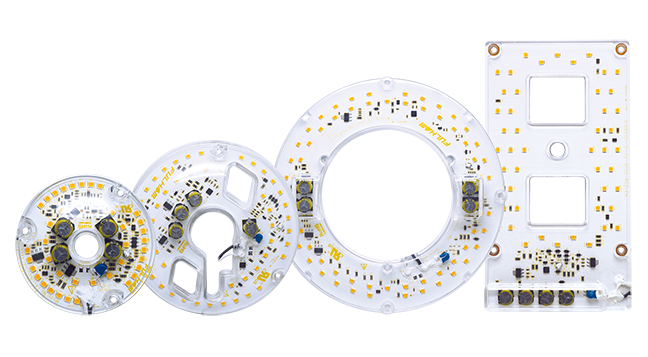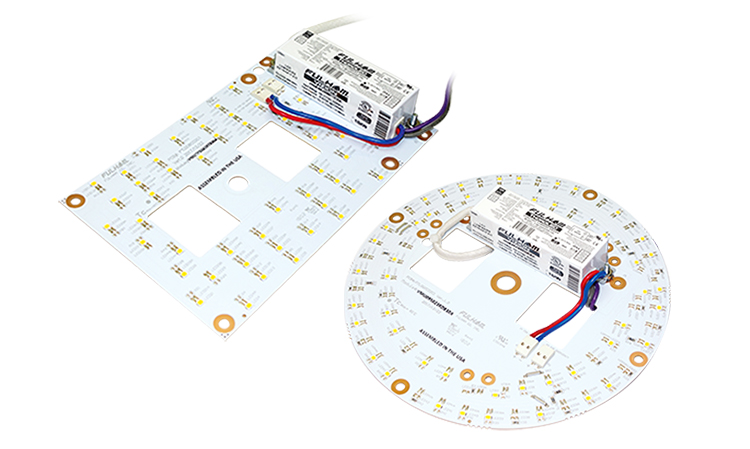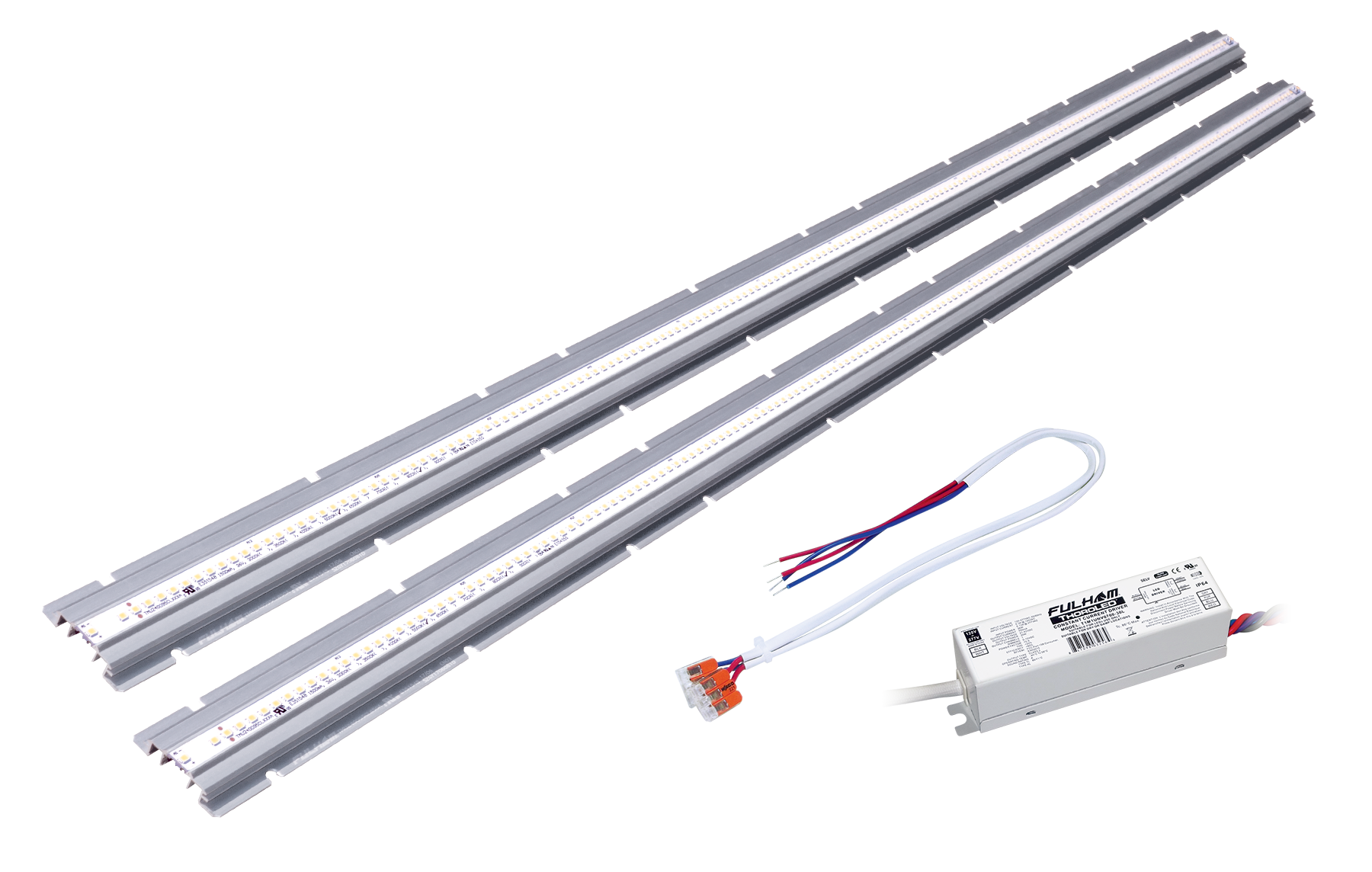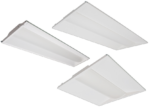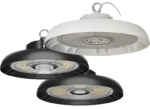LED Retrofit Kits and Engines - Retrofitting Made Easy
Retrofitting existing non- LED fixtures to efficient LED technology has never been easier. The Fulham LED retrofit line features field-installable AC Direct Drive and DC LED engine kits in various shapes, LED light power levels (at different lumens / wattage), dimming options, and color temperatures. DLC® kits are available. Or download the Fulham LED Retrofit Catalog to learn more.
LED Conversions
Fulham has been a recognized leader in developing and supplying LED retrofit kit solutions for many years. Our LED retrofit kits allow you to preserve your existing non-LED lighting fixture investment when retrofitted with Fulham’s energy-efficient, long-lasting LED lights.
Our LED retrofit kits are available in many sizes, shapes, choices of wattage / lumens, color temperatures, and dimming options. They are often ready to go as certified for convenience, in-field installation (check individual spec sheets for respective certifications).
Our LED retrofit kits are offered in options that include in-field installable AC Direct Drive and DC LED engine kits – with DLC® kits available.
You may utilize our ROI calculator for more information about the financial benefits of retrofitting, versus buying entirely new LED fixtures. (https://www.fulham.com/updates/LED-savings-calculator-v1b.xls)
Fluorescent to LED Retrofit (and other legacy, lesser energy efficient technologies)
Fulham’s LED retrofit kits (full, detailed installation instructions are included) also make it easy to remove your legacy (old technology, energy-inefficient) light bulbs / lamps or tubes, e.g. HID, Metal Halide, fluorescent or induction lighting systems.
You can start to enjoy the long life, low maintenance and energy savings of LED technology – in your existing fixture housings, such as recessed lighting, troffers, etc. Incidentally, not only is this an economical solution ( equal or greater lumens with lower wattage) with more rapid ROI than investing in entirely new fixtures, but also it is a more environmental, “green” one. Not only that, from an architectural design standpoint, maintaining existing fixtures means no mismatched luminaires on your property.
Fulham’s Rapid Product Development program may also be advantageous to you when it comes to custom modifications that make LED retrofits possible for your specific project’s circumstances. Click here for details> (https://www.fulham.com/rapid-product-development/). Custom LED lighting solutions may ultimately be most cost-efficient after considering how LED retrofits allow you to continue using your existing housings.
Fulham is reputed for developing modules and kitted components specifically for unique fixtures, when the opportunity is of a scale that makes economic sense. Fulham’s Custom Shop has the engineering know-how to turn around solutions fast. Contact us whenever you have LED retrofit needs that are not necessarily yet represented in our LED kit stock offerings.
Please reach out for any detailed questions about Fulham Vizion LED retrofit kits – whether your application is an LED wall sconce, a recessed lighting fixture, a standard LED troffer, a close to the ceiling fixture, etc. out to your Fulham representative or regional sales manager. They’d be pleased to provide additional details about all of our LED Vizion retrofit lighting solutions, their features, and their numerous money-saving benefits.
What is a retrofit kit?
Just to be sure that you’re tracking with us with everything referenced above, let’s take a step back and cover the basics with the answer to the question, “what is a retrofit kit” in the first place?
A retrofit kit is a convenient aggregation of certified components (LED modules and LED drivers), fasteners, and instructions, which allows for someone who already possesses certain types of older fixtures to still use those fixtures by gutting them of their older, inefficient lighting system and replacing that legacy technology with Fulham’s Vizion brand LED retrofit kit technology.
Most often, the types of technologies that are being replaced are fluorescent, High Intensity Discharge (HID), Metal Halide (a type of HID), HPS (High Pressure Sodium, also a kind of HID), induction (a variety of fluorescent), and so on.
Most often, retrofit kits, since they address the conversion of existing items in the field, are certified for conversion away from the factory. And to make them even more financially-viable with a quicker ROI (Return on Investment) than they already would have, they are often eligible for utility rebates as DLC Qualified items.
How to retrofit to LED lights
Each retrofit kit includes detailed installation instructions that outline the tools and steps for converting from older lighting technology to the newer LED technology in the LED conversion kit.
For instance, if the original fixtures were fluorescent troffers, the installation instructions may include details explaining how to open the existing fixtures, remove the fluorescent ballasts and unneeded wiring, insert the LED driver into the ballast cavity, affix the LED modules / LED strips / LED arrays to the housing, wire up the new LED driver / power supply to the modules, and put the fixture back together.
Why would someone desire to replace their working older fixture with LED technology, via a retrofit / conversion kit?
The benefits of LED technology are well documented and proven:
- They function at a small fraction of the energy required to power other types of lighting (lower wattage), such as fluorescent, for instance – while offering equivalent (or greater) lumens. So, they eventually pay for themselves as a return on investment, particularly with luminaires that are left ON for 12 or more hours per day, such as recessed lighting in office buildings, etc.
- They far outlast older technology, which means fewer relampings and less time spent by a facility manager changing out dead bulbs / lamps.
- When expended, they do not contain any mercury, so they do not incur any special (and costly) disposal fees.
- They do not have any glass to shatter or any filaments to break, so they naturally function better in hazardous or ‘rough’ environments with vibration present.
- They do not give off any UV (ultraviolet) rays or infrared, so they don’t attract bugs or fade artwork.
- They generally run cooler than other, less energy-efficient lighting technologies, which means lower air-conditioning costs in the summer (HVAC benefits)

